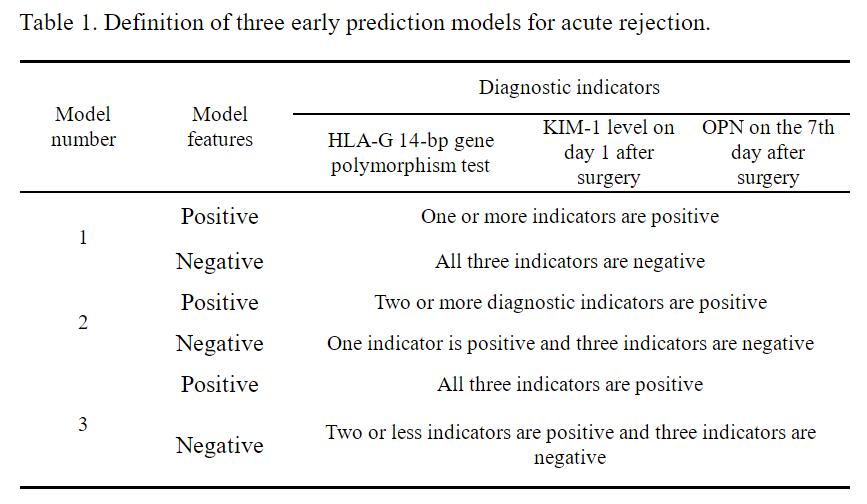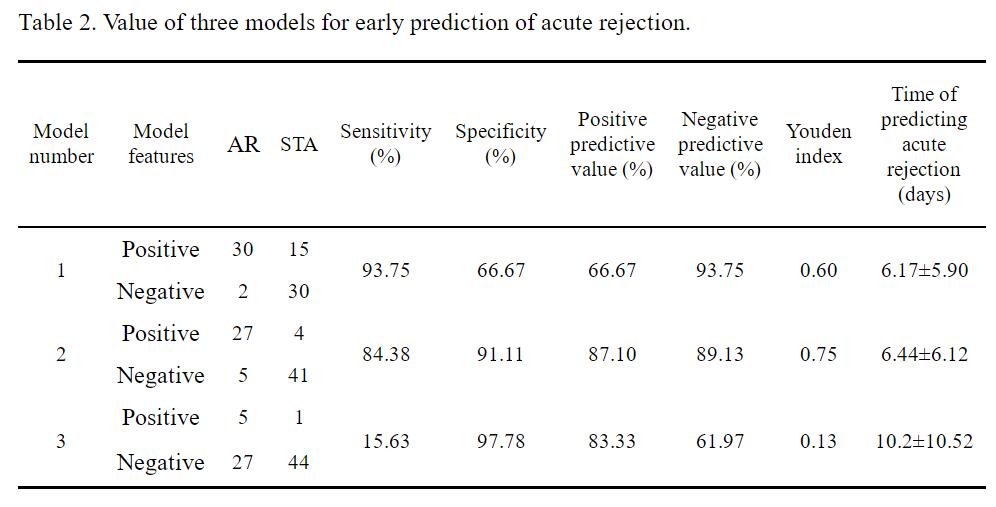Establishment of early warning model of acute rejection in combination with HLA-G 14-bp gene polymorphism, serum KIM-1and OPN
Zhankui Jin1,2, CuiXiang Xu1,2, Puxun Tian2, Feng Han1.
1Shaanxi Provincial People’s Hospital, Third Affiliated Hospital of Medical College of Xi’an Jiaotong University, Xi’an, People's Republic of China; 2Kidney Transplantation, First Affiliated Hospital of Medical College of Xi’an Jiaotong University, Xi’an, People's Republic of China
Introduction: Acute rejection is an important cause of renal allograft loss. There is an urgent need to find an atraumatic marker that can be used alone or in combination with other indicators to make an early diagnosis of acute rejection, so that anti-rejection treatment can be performed in time before renal tissue damage occurs, which protects the function of the graft and enables the graft to survive for a long time.In the present study, we tried to further establish an early warning model of acute rejection by combining the three indicators of HLA-G 14-bp genotyping test, serum KIM-1 on the first postoperative day and serum OPN on the seventh postoperative day.
Methods: We conducted a single-center study of 77 subjects, who were classified into acute rejection group (AR, n=32) and stable allograft function group (STA, n=45) .All kidney transplant recipients received 2 ml of EDTA anticoagulated peripheral venous blood before kidney transplantation, and performed HLA-G 14-bp gene polymorphism typing. Serum KIM-1 level on the first postoperative day and OPN level on the 7th postoperative day were measured by Luminex. The study was approved by the local ethical committee. All patients with end-stage renal disease underwent kidney transplantation with living-related donor. The HLA-G+14/+14-bp genotype was significantly associated with acute rejection after transplantation. Therefore, we define recipients of the HLA-G+14/+14-bp genotype as positive, while HLA-G+14/−14-bp genotype and HLA-G−14/−14-bp genotype recipients are defined as negative.Serum KIM-1 on the first postoperative day was defined as positive if greater than 153 pg/ml and negative as less than 153 pg/ml; Serum OPN on the seventh postoperative day was defined as positive and less than 21921 pg/ml Defined as negative.
Results: We have established three early warning models for acute rejection (Table 1)

and found that Model 2 is the model with two or more positive diagnostic indicators. The ability to early alert acute rejection is the strongest, and the Youden index is the largest (0.75). The specificity was 84.38% and 91.11%, the positive predictive value and negative predictive value were 87.10% and 89.13%, respectively, and the average occurrence of acute rejection could be warned 6.44±6.12 days in advance (Table 2).

The ability of Model 2 to early alert acute rejection is stronger than the other two models, becoming the best model for early warning of acute rejection in this study.
Conclusions: We combined the HLA-G 14-bp genotyping test, serum KIM-1 on the first postoperative day, and OPN on the seventh postoperative day to establish three early warning models for acute rejection. Among the three models, the sensitivity and specificity of two or more positive indicators for early warning of acute rejection were 84.38% and 91.11%, which could predict the occurrence of acute rejection in advance.
There are no comments yet...